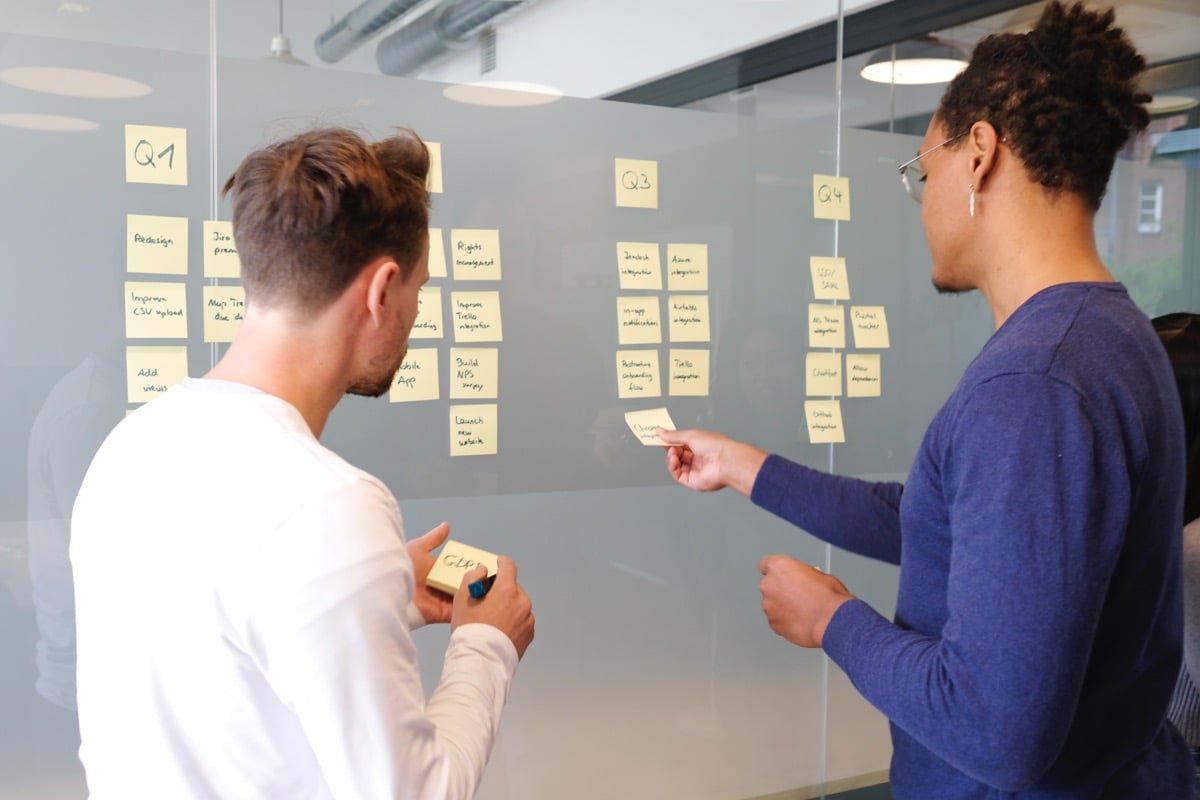
This cannot be understated: You must be on the same page as your developer.
As we’ve highlighted previously in our series on the fundamentals of good client-developer relationships, the biggest issues occur when both parties believe they share the same expectations when in fact they do not.
If the client and developer fail to clearly define goals at the start of a project — and assess progress toward those goals at regular intervals — the relationship will rapidly deteriorate. Here’s how the discovery process helps to build shared expectations and set milestones to manage those expectations.
Build a Set of Shared Expectations
Divergent expectations are one of the biggest hurdles to successful client-developer relationships.
The problem is that clients — and stakeholders in particular — usually have clear goals and outcomes for a project before planning takes place, SocialTalent’s Grace Windsor writes. “If unaddressed, this can lead to conflict between what is promised, how this promise is interpreted, and what is actually delivered.”
Windsor recommends engaging stakeholders during the planning stage and working with them to build a set of realistic expectations based on resources and desired outcomes.
“The best way to build a set of shared expectations is a thorough discovery session,” says Denise Beachley, CIO and partner at Kingsmen Software. “It’s a chance to break down each stakeholder’s aims for the project, establish overarching business goals and then work together to build a vision for the project that everyone is happy with.”
This is why we say discovery is the most important stage in software development.

Manage Those Expectations Throughout the Project
Setting shared expectations and goals is just the beginning. Both client and developer need to continually manage those expectations during the project.
Development projects are rarely as straightforward as they seem during the discovery phase, says Randy Costner, head of engineering at Kingsmen Software. Issues occur, goals change and even the most thought-through work breakdown structure can change. Minor issues won’t derail a project on their own. But failing to manage and update the expectations of both parties can lead to stakeholder disengagement, inefficient prioritization and performance issues.
Digital project management consultant Brett Harned recommends several strategies to keep client expectations in check during a project. One is to create a shared to-do list — like a work breakdown structure — where tasks, milestones and deliverables can be tracked by stakeholders from both parties.
The second is to be open and honest with clients, especially when it comes to delivering bad news. “If you think something might go wrong, talk about it,” he says. “There's no benefit to keeping worrisome news hidden.”
Use Milestones to Keep Expectations in Check
Milestones delineate project schedules, marking key points and major phases of work.
Everyone can understand milestones. They keep projects on tack, and they can also be used to keep everyone’s expectations in check. “Milestones are a great visualization tool,” says Frank Wanicka, CTO and partner at Kingsmen Software. “They help even non-technical stakeholders estimate completion times.”
Milestones are not, however, set in stone. Don’t be scared to modify them during the project if there’s a need and if everyone agrees, product development consultant John Carter writes. “Your work is not for the sake of the plan; the plan is there to help the team to do the work.”
Nor are milestones meant to occur at regular intervals, he adds. “For example, they’re not meant to occur on a monthly cadence. Nor do they need to be attached to a presentation to senior managers that require the team to continue to justify the project. Design your project milestones to get the people with the right kind of skills, to work together on the right problem, at the right time, in order to propel the project forward.”
That’s not to say you shouldn’t expect regular communication with developers. Alexa Alfonso, client success director at Nerdery, finds a weekly checkpoint is ideal to “ensure that priorities are in line and any blockers can be identified and mitigated.” That’s on top of the normal communication that happens throughout the week.
Carefully managed expectations contribute significantly to great client-developer relationships. But expectation management is a two-way street. Everyone involved in the project has an obligation during the discovery phase to communicate openly about their aims for the project and work collaboratively to manage those expectations for the length of the project.
